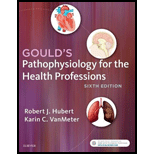
To explain: The sensory receptors and its classification based on location and stimuli.
Concept introduction: The psychological capacity of an organism that provides a data for the perception is called the sense. The sense organs contain receptors that transmit information through sensory neurons to the corresponding organs in the nervous system.
Explanation of Solution
The sensory receptors are the structure that reacts to the physical stimulus in the environment. It has a sensory nerve ending that transmits the information through the process of generating nerve impulses to the brain for the perception and interpretation. Sensory receptors can be classified based on their location and stimuli.
Classification based on location:
Sensory receptors can be classified based on their location are given as follows:
- Exteroceptors
- Visceroceptors
- Proprioceptors
Exteroceptors: These receptors are also called cutaneous receptors. They are located on the body surface such as dermis and epidermis that receives the external stimuli. There are two kinds of exteroceptors and that are given as follows:
- Tactile receptors- Touch
- Cutaneous receptors- Pressure, light, and temperature.
Some of the special exteroceptors located in the head that are represented by the receptors for taste, smell, hearing, and vision.
Visceroceptors: These receptors are also called the internal receptors. These are the receptors that respond to stimulus in the visceral region that includes visceral organs and blood vessels. These receptors located inside the body surface. It provides information about the environment around the stimulus. It includes the receptors for blood pressure, blood pH, and blood volume.
Proprioceptors: These receptors are also called muscle sense. They provide information about the movement of the body, orientation, muscle stretch and its physical locations. They respond to the stimuli that occur in the skeletal muscles, ligaments, joints, and tendons.
Classification based on stimuli:
Sensory receptors are classified as six types based on their stimuli are given as follows:
- Mechanoreceptors
- Chemoreceptors
- Thermoreceptors
- Photoreceptors
- Nociceptors
- Osmoreceptors
Mechanoreceptors: These receptors respond to mechanical stimulus. For example: pressure, touch, equilibrium, and hearing.
Chemoreceptors: These receptors respond to dissolved chemicals during sensations of taste and smell. This also causes responses to the changes in the internal body chemicals such as difference in concentrations of oxygen, carbon dioxide, and hydrogen ions in the blood.
Thermoreceptors: These receptors respond to the change in temperature. They can be warm and cold receptors. These receptors are located on the skin and hypothalamus.
Photoreceptors: They are stimulated by light receptors. These receptors are present in the cells of retina.
Nociceptors: These receptors respond to various stimulus that are associated with tissue damage or intense mechanical stimuli. These stimuli are associated with pain that is interpreted by brain.
Osmoreceptors: These are specialized receptors that are located in the hypothalamus. It recognizes the changes in the osmotic pressure of fluids in the body.
Want to see more full solutions like this?
Chapter 15 Solutions
Gould's Pathophysiology for the Health Professions, 6e
- The importance of seeing how it is to work as a chief in a nursing home and how they accommodate for special diets (low sodium, low sugar, heart healthy, etc.) and how can a nutritionist utilize this in their career? Please not just a short explanation.arrow_forwardThe importance of dealing with work confrontation (different healthcare departments fighting; diet aide and CNA) as a manager of a kitchen and how can a nutritionist utilize this in their career? Please not just a short explanation.arrow_forwardQuestion 1: You are the Community Dietitian for the local public health agency. Recent news coverage has highlighted the state of food insecurity and child hunger in your county. Initial reports indicate that 15% of the population is food insecure. Of this group, 28.4% are children. It is estimated that 86% of the food insecure population is eligible for federal nutrition assistance. You are asked to conduct a community needs assessment and, ultimately, develop an appropriate intervention aimed at reducing hunger. First, however, you must submit a plan for the needs assessment. Complete the following: 1. State the nutritional problem (10 pts) 2. Set the parameters of the assessment (20 pts, 5 pts per bullet) A. State the purpose of the assessment B. Identify the community and target population for this assessment C. Develop 2 goals and 2 SMART objectives for each goal D. Discuss the major categories of community data and target population data E. Specify the types of data you might…arrow_forward
- Assignment Instructions: Nursing Research Essay Objective: Select a specific area of nursing that captivates your interest. Compose a comprehensive essay, ranging from 300 to 500 words, that delves into the intricacies of nursing research within your chosen area. It is recommended that you consider the topic carefully as this topic, should be the topic for your course research project: see week 4 assignments. Your essay should elucidate the following points: The Significance of Nursing Research: Explore how nursing research in your selected area contributes to advancements in applied medicine. Discuss the potential achievements and innovations that can arise from dedicated nursing research in this field. Articulate the value and impact of such research on patient care, healthcare practices, and overall medical knowledge. Research Methods and Approaches: Identify the most effective methods for conducting nursing research in your chosen area. Highlight specific topics or research…arrow_forwardThe importance of understanding low meal consumption of residents in a nursing home and how can a nutritionist utilize this in their career? Please not just a short explanation.arrow_forwardThe importance of accommodating special diets (diabetic, low sodium, etc.) in a nursing home and how can a nutritionist utilize this in their career? Please not just a short explanation.arrow_forward
- The importance of making a weekly clean list for kitchen staff in a nursing home and how can a nutritionist utilize this in their career? Please not just a short explanation.arrow_forwardThe importance of keeping a clean food pantry in a nursing home and how can a nutritionist utilize this in their career? Please not just a short explanation.arrow_forwardI’m finding it a bit difficult to understand the Arrhenius equation and how shelf life relates to pH and temperature. Also in the question that says ‘this solution maintains 80% potency at 30C’, am I correct in thinking the formula would be:t = ln(0.8)/ -karrow_forward
- 4.24 mmmarrow_forwardResearch videos and websites about mission and vision statements in health care organizations. What did you find most interesting? What did you find to be the most positive-sounding parts of the statements? Were there any mission and vision statements that seemed disconnected from each other or out of alignment with the goals of the organization? If so, how might you change them?arrow_forwardThe Importance of Reviewing Department Budget in a nursing home kitchen and how can a nutritionist utilize this in their career? Please not just a short explanation.arrow_forward
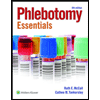 Phlebotomy EssentialsNursingISBN:9781451194524Author:Ruth McCall, Cathee M. Tankersley MT(ASCP)Publisher:JONES+BARTLETT PUBLISHERS, INC.
Phlebotomy EssentialsNursingISBN:9781451194524Author:Ruth McCall, Cathee M. Tankersley MT(ASCP)Publisher:JONES+BARTLETT PUBLISHERS, INC.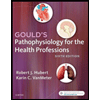 Gould's Pathophysiology for the Health Profession...NursingISBN:9780323414425Author:Robert J Hubert BSPublisher:Saunders
Gould's Pathophysiology for the Health Profession...NursingISBN:9780323414425Author:Robert J Hubert BSPublisher:Saunders Fundamentals Of NursingNursingISBN:9781496362179Author:Taylor, Carol (carol R.), LYNN, Pamela (pamela Barbara), Bartlett, Jennifer L.Publisher:Wolters Kluwer,
Fundamentals Of NursingNursingISBN:9781496362179Author:Taylor, Carol (carol R.), LYNN, Pamela (pamela Barbara), Bartlett, Jennifer L.Publisher:Wolters Kluwer,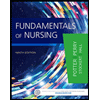 Fundamentals of Nursing, 9eNursingISBN:9780323327404Author:Patricia A. Potter RN MSN PhD FAAN, Anne Griffin Perry RN EdD FAAN, Patricia Stockert RN BSN MS PhD, Amy Hall RN BSN MS PhD CNEPublisher:Elsevier Science
Fundamentals of Nursing, 9eNursingISBN:9780323327404Author:Patricia A. Potter RN MSN PhD FAAN, Anne Griffin Perry RN EdD FAAN, Patricia Stockert RN BSN MS PhD, Amy Hall RN BSN MS PhD CNEPublisher:Elsevier Science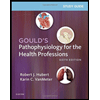 Study Guide for Gould's Pathophysiology for the H...NursingISBN:9780323414142Author:Hubert BS, Robert J; VanMeter PhD, Karin C.Publisher:Saunders
Study Guide for Gould's Pathophysiology for the H...NursingISBN:9780323414142Author:Hubert BS, Robert J; VanMeter PhD, Karin C.Publisher:Saunders Issues and Ethics in the Helping Professions (Min...NursingISBN:9781337406291Author:Gerald Corey, Marianne Schneider Corey, Cindy CoreyPublisher:Cengage Learning
Issues and Ethics in the Helping Professions (Min...NursingISBN:9781337406291Author:Gerald Corey, Marianne Schneider Corey, Cindy CoreyPublisher:Cengage Learning





